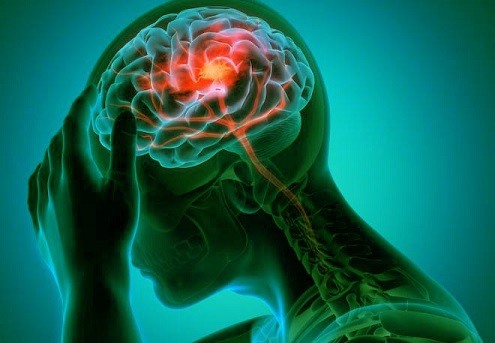Nikhil Prasad Fact checked by:Thailand Medical News Team Aug 02, 2024 8 months, 3 weeks, 3 days, 17 hours, 43 minutes ago
Medical News: In a groundbreaking study, medical researchers have uncovered new insights into the brain's response to ischemic stroke. This
Medical News report delves into the fascinating world of cellular responses and the potential for new treatments that could revolutionize stroke recovery. The study was conducted by scientists from MedUni Vienna, Innsbruck Medical University, and the University of Vienna in Austria.
 How brain cells respond to stroke and heal
The Brain's Response to Stroke
How brain cells respond to stroke and heal
The Brain's Response to Stroke
Ischemic stroke occurs when a critical reduction of blood flow in the brain, usually due to an artery blockage, leads to the deprivation of oxygen and nutrients. This deprivation triggers a cascade of events resulting in the loss of neural tissue and lasting neurological dysfunction. Stroke is the second leading cause of disability and death worldwide, emphasizing the urgent need for effective treatments.
Current treatment strategies, including thrombolysis and mechanical thrombectomy, aim to restore blood flow and are most effective when administered within 24 hours of stroke onset. However, the lack of therapies targeting neural tissue regeneration remains a significant gap. Despite this, spontaneous, albeit incomplete, recovery of function often begins within the first week after a stroke, hinting at the brain's inherent capacity for self-repair.
Exploring the Cellular Landscape
The research team employed single-nucleus RNA sequencing (snRNAseq) to investigate the brain's acute response to ischemic stroke at a cellular level. This technology allows for a detailed analysis of gene expression within individual cells, providing a comprehensive view of the cellular landscape following stroke.
The study revealed significant transcriptional changes in oligodendrocyte lineage cells and astrocytes, two crucial types of glial cells in the brain. These cells exhibited infarction- and subtype-specific molecular signatures, highlighting their unique responses to ischemic injury. Notably, oligodendrocyte precursor cells (OPCs), mature oligodendrocytes, and reactive astrocytes showed shared transcriptional features in response to stroke.
Key Findings: The Role of Glial Cells
The findings emphasized the critical role of glial cells in the brain's response to stroke. Oligodendrocytes and astrocytes, traditionally known for their supportive functions in the nervous system, emerged as active players in the recovery process. The study identified several key points:
-Oligodendrocyte Proliferation: Infarction-specific proliferating OPCs and mature oligodendrocytes were observed, indicating an active regenerative response.
-Reactive Astrocytes: These cells showed significant transcriptional changes, participating in a complex network of interactions with other brain cells.
-Immuno-Glial Crosstalk: A shared communication pathway between OPCs, reac
tive astrocytes, and stroke-specific myeloid cells was identified. This crosstalk involved osteopontin-positive myeloid cells and CD44+ proliferating OPCs and reactive astrocytes, suggesting coordinated efforts to repair the brain.
Immuno-Glial Communication
One of the most intriguing discoveries was the molecular dialogue between glial cells and immune cells. The study highlighted the accumulation of osteopontin-positive myeloid cells near CD44+ OPCs and reactive astrocytes in the perilesional zone, the area surrounding the infarct. Osteopontin was found to enhance the migratory capacity of OPCs, potentially aiding in their role in brain repair.
In-Vitro Findings
In vitro experiments further supported these findings. Osteopontin was shown to increase the migration of OPCs without affecting their proliferation, underscoring its role in mobilizing these cells to areas where they are needed most. This discovery opens new avenues for targeted therapies that could harness this mechanism to enhance stroke recovery.
Comparative Analysis
The researchers compared the gene expression profiles of neuroglia following ischemic stroke with those found in other central nervous system (CNS) injuries. They found common molecular events that may shape the cellular composition and microenvironment during early post-stroke recovery. This comparative approach enhances our understanding of the unique and shared aspects of brain injury responses.
Future Directions
The study's insights into the cellular and molecular responses to ischemic stroke pave the way for novel therapeutic strategies. By targeting the specific pathways and cell types involved in the brain's self-repair mechanisms, new treatments could be developed to improve outcomes for stroke patients.
The study findings were published in the peer-reviewed journal: Nature Communications.
https://www.nature.com/articles/s41467-024-50465-z
For the latest on stroke research, keep logging on to Thailand
Medical News.
Read Also:
https://www.thailandmedical.news/news/murine-study-shows-how-covid-19-increases-risk-for-stroke
https://www.thailandmedical.news/news/cerebral-microbleeds-increases-risk-of-stroke-or-dementia
https://www.thailandmedical.news/news/one-third-of-all-exposed-to-covid-19-likely-to-develop-cerebral-microbleeds
